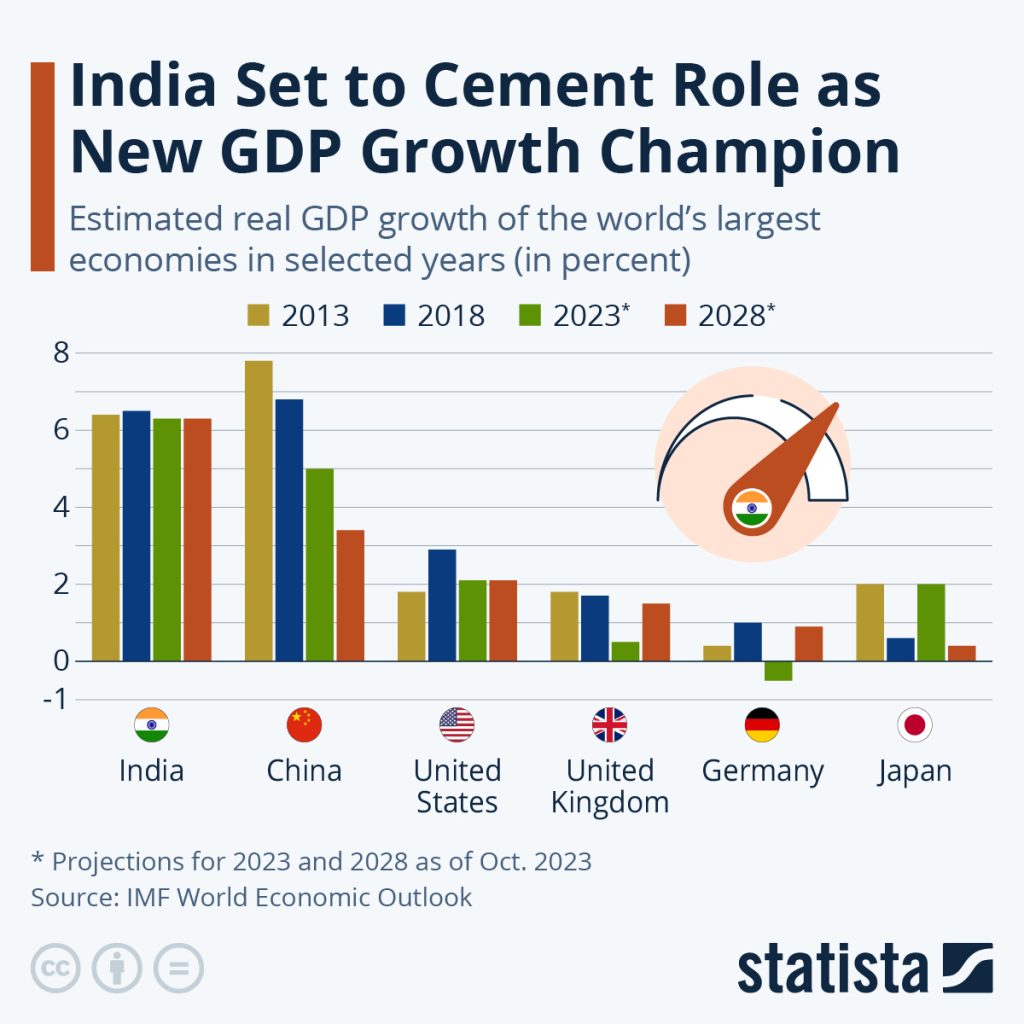NEW DELHI – India’s economy surged ahead in early 2025, growing by 7.4% from January to March. This growth outperformed expectations and put India on a solid path as a major global economy.
The Ministry of Statistics and Programme Implementation reported that India, now the world’s fifth-largest economy, picked up speed from a revised 6.4% in the previous quarter. Worries about a slowdown faded after a soft stretch last year, as India surpassed the 6.8% growth predicted in a Wall Street Journal survey and moved ahead of China’s 5.4% growth for the same period.
This strong performance highlights India’s rising influence as global trade adjusts.
Growth was powered by strong manufacturing and steady household spending. The manufacturing sector grew 4.8%, up from 3.6% last quarter. Construction and mining also expanded. Agriculture output climbed to 4.6%, compared to 2.7% a year ago, helped by good monsoon rains.
There were some signs of weakness, though: household spending grew by 6.0%, which was lower than the previous 8.1%, and government spending dropped by 1.8%. Still, India stands out, with full-year growth expected to reach 6.5%. That matches government estimates and outpaces the United States (1.6%) and China (4.6%), according to the United Nations’ latest report.
India Outpacing China
While India’s economy gathers pace, China faces deeper problems. Youth unemployment, for those aged 16 to 24, reached 15.3% in early 2025, based on China’s official data. In contrast, India’s overall unemployment rate stayed at a steady 5.1% in April.
China’s slowdown, made worse by trade disputes and a weak property market, is making it tough for young job seekers. Analysts warn of wider social and economic problems. India’s young and growing workforce, however, continues to drive local demand, which played a big part in its 7.4% growth.
Changes in global trade are also favouring India. With Donald Trump’s return to the US presidency, tariffs have risen sharply, including a doubling of steel duties to 50%. These new tariffs are a drag on worldwide growth, leading the International Monetary Fund to lower its 2025 global forecast to 2.8% from 3.3%.
At the same time, India could gain from a new trade agreement with the US. Talks are underway that may help India benefit as companies look to move supply chains out of China. Experts believe India could see fewer tariffs than other US trading partners, making it more attractive for manufacturing. Still, competition from places like Vietnam remains, and reports from Nomura suggest India must improve its tax system and cut red tape to draw in more foreign investment.
Apple Inc. is helping India’s momentum by increasing its manufacturing presence. The tech giant has boosted iPhone production in India and plans to make a quarter of its global output there by 2026, up from 14% in 2024.
US-China Trade Tensions
This shift comes as tensions between the US and China grow and US tariffs on Chinese goods rise. Apple’s move is creating jobs and raising India’s electronics exports, in line with the government’s push to expand manufacturing through incentives and better infrastructure.
Challenges remain. The risk of stagflation—a mix of slow growth and high prices—hangs over the world economy, especially in the US, where growth shrank by 0.3% in the first quarter of 2025.
Many economists say Trump’s tariffs could push prices higher, with oil prices climbing back to $66 a barrel after falling to a four-year low. India looks better placed, as inflation is expected to drop to 4.3% in 2025 from 4.9% the year before, staying within the Reserve Bank of India’s preferred range. But global trade uncertainty and fallout from China’s problems could still pose challenges for India.
Domestically, India faces its hurdles. Per capita GDP remains low at $2,880, far behind Japan’s $33,960. Many people in India still live in poverty. But with growth expected to push India past Japan to become the world’s fourth-largest economy by the end of 2025—reaching a nominal GDP of $4.187 trillion—experts say reforms are needed to make growth more inclusive.
NITI Aayog CEO B.V.R. Subrahmanyam credits India’s progress to strong foundations and support from global shifts, but there is rising pressure to make it easier to do business.
For now, India’s 7.4% growth rate stands out. Morgan Stanley has raised its forecasts for the next two years, expecting 6.2% growth in FY26 and 6.5% in FY27. The upgrades are based on strong local demand and more investment in infrastructure.
With US trade talks ongoing and companies like Apple expanding in the country, India is in a good spot to take advantage of global changes—if it can manage the risks of tariffs, inflation, and tough competition from other countries.
Sources: WSJ, Bloomberg
















